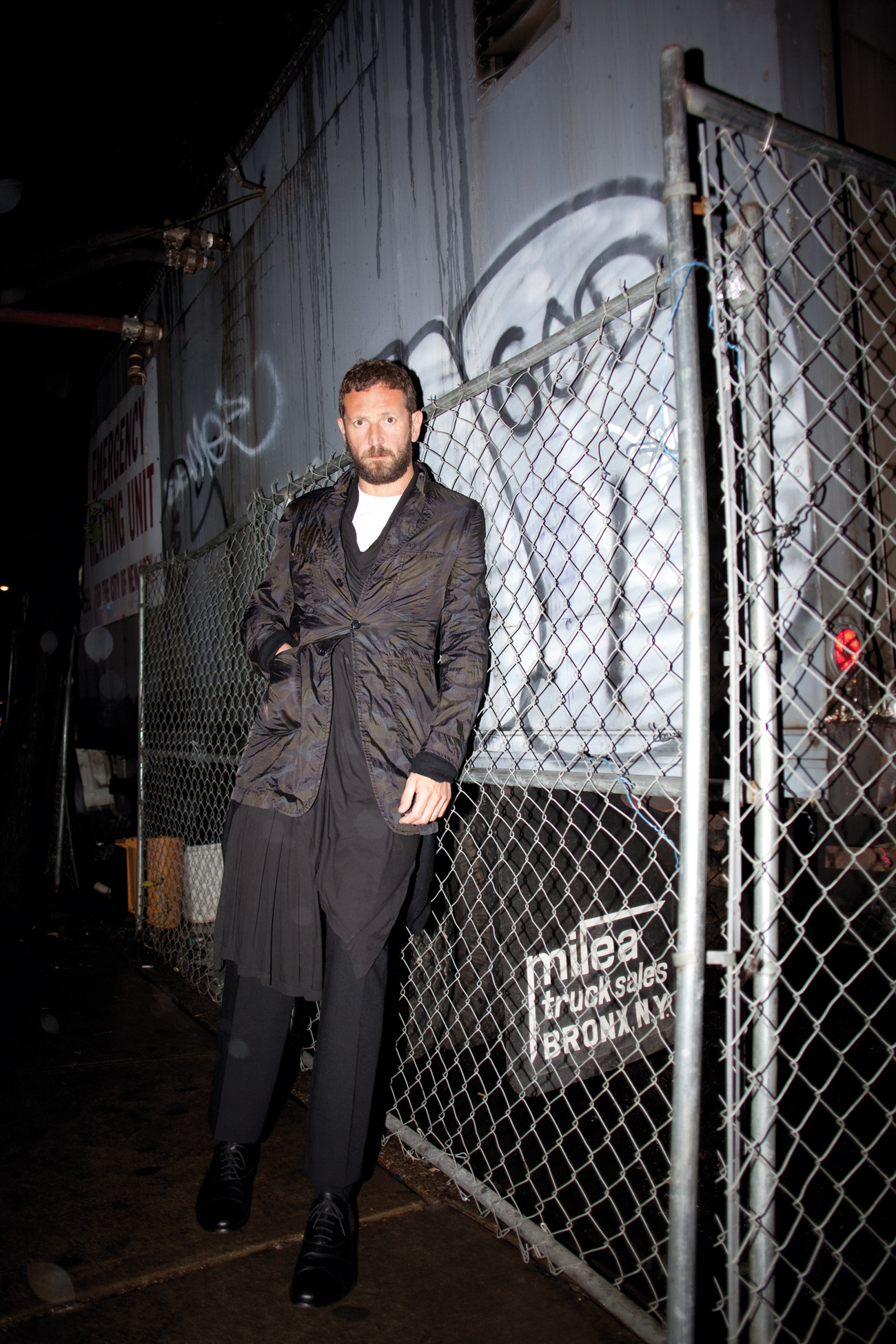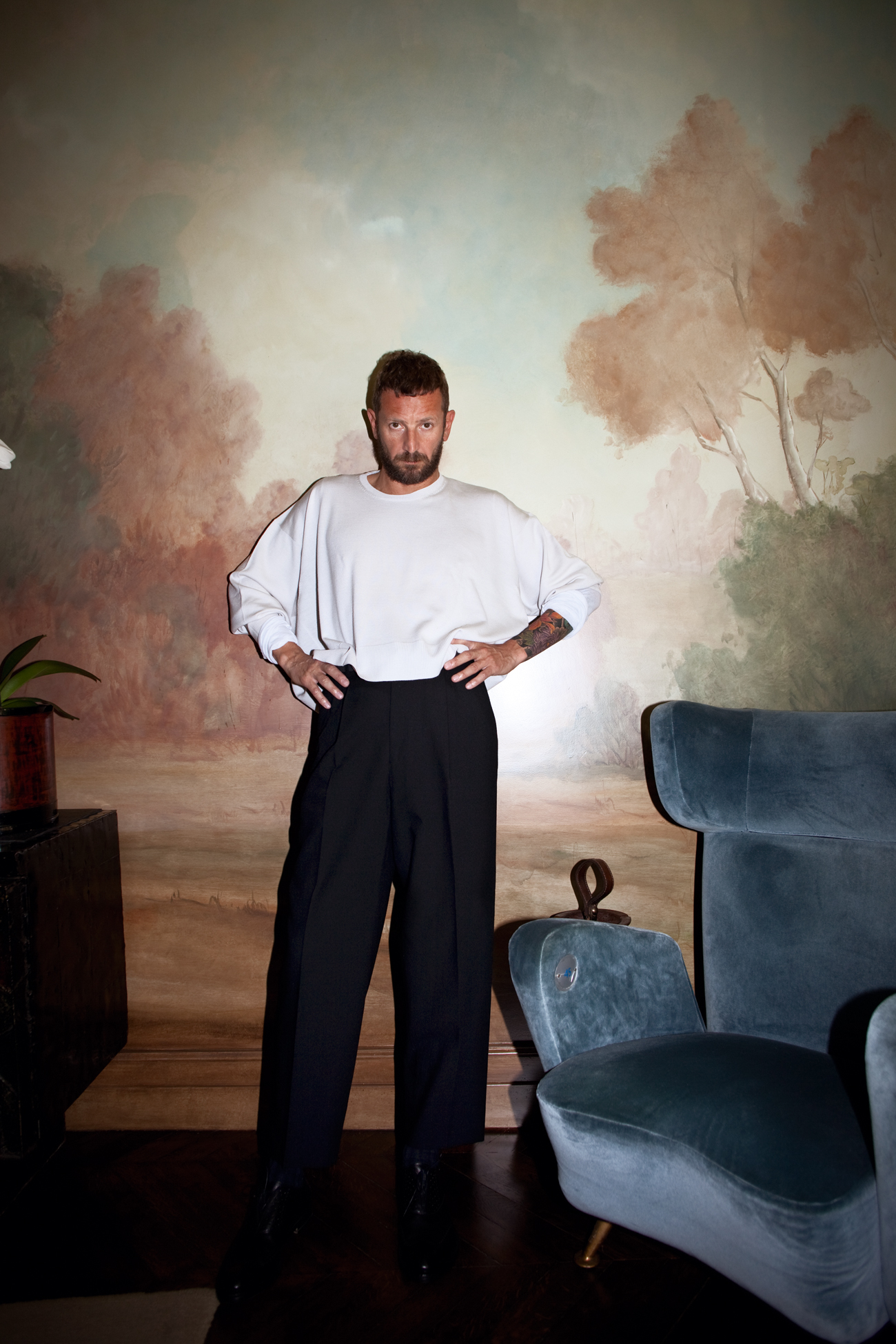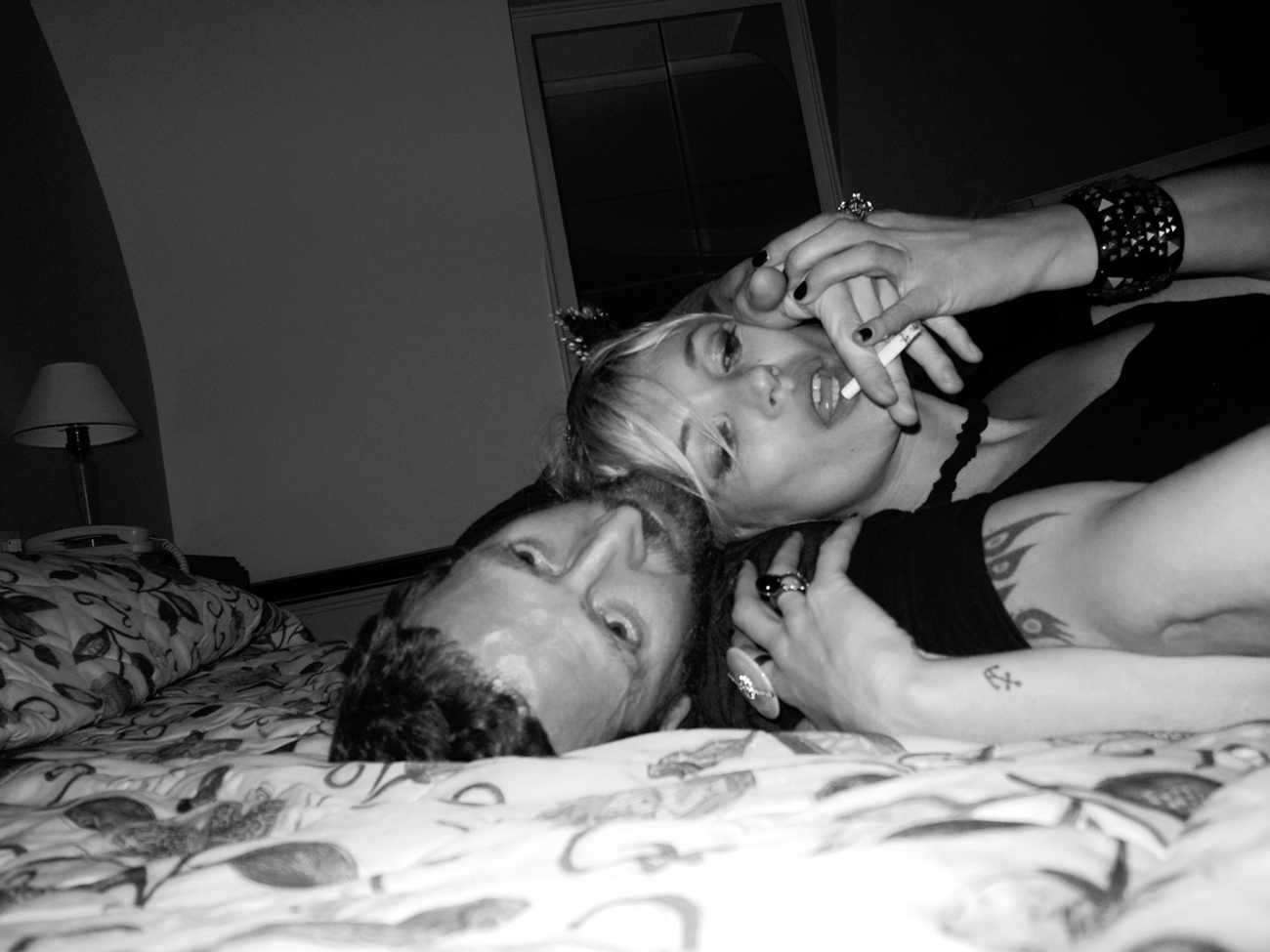Purple Magazine
— F/W 2009 issue 12
Stefano Pilati
 Satin jacket and cotton cashmere voile pants YVES SAINT LAURENT, long black sleeveless cardigan JULIUS, white crewneck t-shirt HANES, and brown leather sandals YVES SAINT LAURENT
Satin jacket and cotton cashmere voile pants YVES SAINT LAURENT, long black sleeveless cardigan JULIUS, white crewneck t-shirt HANES, and brown leather sandals YVES SAINT LAURENT
 Cropped gray sweater, kid mohair high-waisted pants, and black leather lace-up brogues YVES SAINT LAURENT
Cropped gray sweater, kid mohair high-waisted pants, and black leather lace-up brogues YVES SAINT LAURENT
 Vintage black and green camouflage print jacket COMME DES GARÇONS HOMME PLUS, long black shawl JULIUS, kid mohair high-waisted pants YVES SAINT LAURENT, white crewneck t-shirt hanes, and vintage leather oxford shoes PRADA
Vintage black and green camouflage print jacket COMME DES GARÇONS HOMME PLUS, long black shawl JULIUS, kid mohair high-waisted pants YVES SAINT LAURENT, white crewneck t-shirt hanes, and vintage leather oxford shoes PRADA
 Crepe de chine cuffed jacket YVES SAINT LAURENT, long sleeve t-shirt RICK OWENS, and white pleated work pants DICKIES
Crepe de chine cuffed jacket YVES SAINT LAURENT, long sleeve t-shirt RICK OWENS, and white pleated work pants DICKIES
 Merino knit poncho RICK OWENS, black cotton pants YOHJI YAMAMOTO and leather oxford shoes PRADA
Merino knit poncho RICK OWENS, black cotton pants YOHJI YAMAMOTO and leather oxford shoes PRADA
 Cropped gray sweater, kid mohair high-waisted pants, and black leather lace-up brogues YVES SAINT LAURENT
Cropped gray sweater, kid mohair high-waisted pants, and black leather lace-up brogues YVES SAINT LAURENT
[caption id=”attachment_120637″ align=”alignalignnone”…
